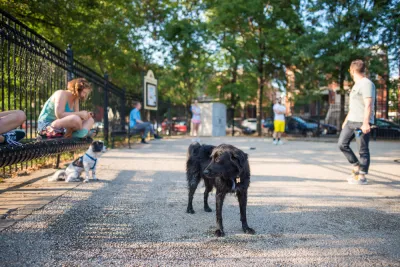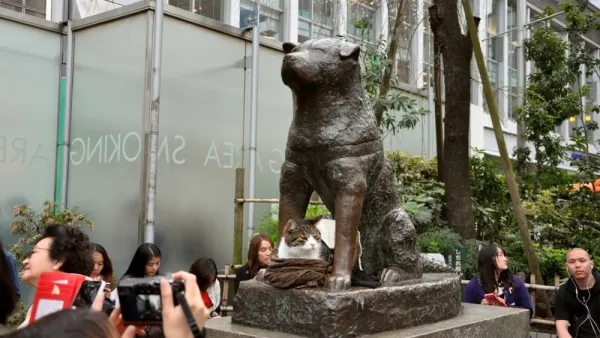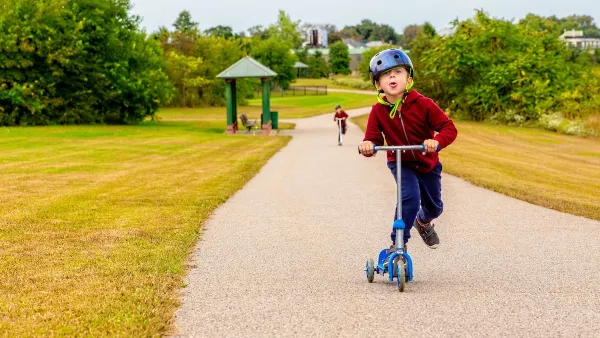The number of dog parks in the United States has almost doubled since 2007. Some worry these spaces are not welcoming or could signal gentrification.

A trend of toward making public spaces specialized for dogs strikes some as a way to exclude, "'Much like the appearance of yoga studios and trendy restaurants, dog parks are highly visible indicators of change in a city,' said Chuck Wolfe, a Seattle-based lawyer and the founder of Seeing Better Cities Group," Mary Hui writes in The Washington Post.
Hui reports on a space that became a Shaw Dog Park near Washington, D.C.'s Logan Circle. "Before that area was a dog park, it was a canchita — Spanish for a small soccer field — where a largely Latino community would play nightly fast-paced games of four-on-four pickup soccer," Hui writes. One day with no notice or explanation, that field was razed. Some see this as an example of how less politically visible or vocal groups can see their spaces taken from them.
Still dog parks have proven popular and they’re unlikely to lose that popularity any time soon. "Between 2007 and 2016, the number of dog parks across the United States grew by close to 90 percent, and dog parks are the fastest-growing type of park in American cities," Hui reports.
FULL STORY: Pups and public space: What D.C.’s dog parks say about the changing city

National Parks Layoffs Will Cause Communities to Lose Billions
Thousands of essential park workers were laid off this week, just before the busy spring break season.

Retro-silient?: America’s First “Eco-burb,” The Woodlands Turns 50
A master-planned community north of Houston offers lessons on green infrastructure and resilient design, but falls short of its founder’s lofty affordability and walkability goals.

Delivering for America Plan Will Downgrade Mail Service in at Least 49.5 Percent of Zip Codes
Republican and Democrat lawmakers criticize the plan for its disproportionate negative impact on rural communities.

Test News Post 1
This is a summary

Test News Headline 46
Test for the image on the front page.

Balancing Bombs and Butterflies: How the National Guard Protects a Rare Species
The National Guard at Fort Indiantown Gap uses GIS technology and land management strategies to balance military training with conservation efforts, ensuring the survival of the rare eastern regal fritillary butterfly.
Urban Design for Planners 1: Software Tools
This six-course series explores essential urban design concepts using open source software and equips planners with the tools they need to participate fully in the urban design process.
Planning for Universal Design
Learn the tools for implementing Universal Design in planning regulations.
EMC Planning Group, Inc.
Planetizen
Planetizen
Mpact (formerly Rail~Volution)
Great Falls Development Authority, Inc.
HUDs Office of Policy Development and Research
NYU Wagner Graduate School of Public Service




























